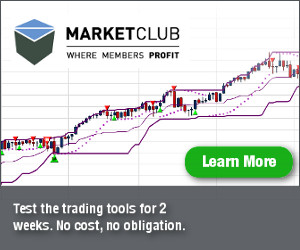Dow lost 2, decliners ahead of advancers 2-1 & NAZ was down 7. The MLP index was flattish in the 418s (near its multi year lows) & the REIT index lost 2+ to the 308s (its low since late Oct). Junk bond funds continue to lose ground & Treasuries saw more selling, bringing the yield on the 10 year Treasury to its highest since early Oct. Oil rallied, going over 60, & gold went up.
AMJ (Alerian MLP Index tracking fund)
![Live 24 hours gold chart [Kitco Inc.]](http://www.kitco.com/images/live/gold.gif?0.648186263254933)

The good news on the jobs front continued as American employers put out a record number of help-wanted signs in Apr, signaling gains in hiring can be sustained. The number of positions waiting to be filled increased 267K to 5.38M, the most in data back to Dec 2000, from 5.11M in Mar, according to the Labor Dept. Openings were widespread among industries, including health care, retailers & providers of professional services. As vacancies mount and unemployment wanes, employers will be pressured to boost wages in order to attract the most talented workers. The report contains some of the metrics the Federal Reserve (FED) tracks to determine the health of the job market as policy makers discuss when to raise interest rates. The 267K increase in openings for Apr was the largest since Mar 2012. Vacancies in health care jumped 100K to 910K, while retailers sought 543K employees, almost 30K more than in Mar. The Job Openings & Labor Turnover Survey (JOLTS) adds context to monthly payrolls figures by measuring dynamics such as resignations, help-wanted ads & the pace of hiring. Although it lags the Labor Dept's other jobs data by a month, the FED follows the report as a measure of labor-market tightness & worker confidence. 2.7M quit their jobs in Apr, little changed from Mar. The quits rate, 2% when the recession started at the end of 2007, fell to 1.9% in Apr from 2% in Mar. The hiring rate, the number of people who got new jobs divided by the number who worked or were paid, fell to 3.5% from 3.6%. Hires decreased to 5.01M from 5.09M. About 1.6 people are vying for every opening, compared with about 1.8 when the last recession began in Dec 2007. In the year that ended in Apr, employers added a net 2.8M jobs, representing 60M hires & 57.2M separations.
Wholesalers in the US boosted their stockpiles in Apr by the largest amount since Jan, while their sales surged at the fastest pace in 13 months. Stockpiles held at the wholesale level rose 0.4% from Mar, the Commerce Dept reported. Sales increased 1.6% after falling in Mar. It was the strongest advance in a year & follows a number of months in which sales either declined or were flat. An increase in inventories can be an indication of rising business optimism as companies restock empty store shelves in anticipation of stronger demand. Wholesale & retail levels are expected to rebound in the coming months after a slowdown in Q1. A pickup in consumer spending, which accounts for 70% of economic activity, would help support overall growth. The economy has emerged from that soft patch & should see stronger activity for the rest of the year. Growth of 2-2.5% in Q2 & growth may accelerate to 3% in H2. This rebound is contingent on continued strength in the job market, which should boost consumer incomes & power gains in consumer spending.
Dow is down a substantial 550 from its record in just the last 3 weeks. At the same time bonds have sold off. The yield on the 10 year Treasury is up more than 50 basis points in 7 weeks, one more major retreat. Traditionally stocks & bonds go in opposite directions when one security is sold & the proceeds are used to buy the other. Junk bond funds have dropped around 5% in the last month, while MLPs & REITs have been under a lot of selling pressure. Besides uncertainty surrounding the Greek debt mess & an uneven US economic recovery, there is a growing awareness by investors that high interest rates are coming soon & they will hurt almost all securities. News stories today were generally positive but buyers were nowhere to be found. Dow remains in the red YTD!!
Dow Jones Industrials
AMJ (Alerian MLP Index tracking fund)
| CLN15.NYM | ....Crude Oil Jul 15 | ....60.31 | (3.7%) |
![Live 24 hours gold chart [Kitco Inc.]](http://www.kitco.com/images/live/gold.gif?0.648186263254933)

The good news on the jobs front continued as American employers put out a record number of help-wanted signs in Apr, signaling gains in hiring can be sustained. The number of positions waiting to be filled increased 267K to 5.38M, the most in data back to Dec 2000, from 5.11M in Mar, according to the Labor Dept. Openings were widespread among industries, including health care, retailers & providers of professional services. As vacancies mount and unemployment wanes, employers will be pressured to boost wages in order to attract the most talented workers. The report contains some of the metrics the Federal Reserve (FED) tracks to determine the health of the job market as policy makers discuss when to raise interest rates. The 267K increase in openings for Apr was the largest since Mar 2012. Vacancies in health care jumped 100K to 910K, while retailers sought 543K employees, almost 30K more than in Mar. The Job Openings & Labor Turnover Survey (JOLTS) adds context to monthly payrolls figures by measuring dynamics such as resignations, help-wanted ads & the pace of hiring. Although it lags the Labor Dept's other jobs data by a month, the FED follows the report as a measure of labor-market tightness & worker confidence. 2.7M quit their jobs in Apr, little changed from Mar. The quits rate, 2% when the recession started at the end of 2007, fell to 1.9% in Apr from 2% in Mar. The hiring rate, the number of people who got new jobs divided by the number who worked or were paid, fell to 3.5% from 3.6%. Hires decreased to 5.01M from 5.09M. About 1.6 people are vying for every opening, compared with about 1.8 when the last recession began in Dec 2007. In the year that ended in Apr, employers added a net 2.8M jobs, representing 60M hires & 57.2M separations.
Record Job Vacancies Signal U.S. Can Sustain Employment Gains
Wholesalers in the US boosted their stockpiles in Apr by the largest amount since Jan, while their sales surged at the fastest pace in 13 months. Stockpiles held at the wholesale level rose 0.4% from Mar, the Commerce Dept reported. Sales increased 1.6% after falling in Mar. It was the strongest advance in a year & follows a number of months in which sales either declined or were flat. An increase in inventories can be an indication of rising business optimism as companies restock empty store shelves in anticipation of stronger demand. Wholesale & retail levels are expected to rebound in the coming months after a slowdown in Q1. A pickup in consumer spending, which accounts for 70% of economic activity, would help support overall growth. The economy has emerged from that soft patch & should see stronger activity for the rest of the year. Growth of 2-2.5% in Q2 & growth may accelerate to 3% in H2. This rebound is contingent on continued strength in the job market, which should boost consumer incomes & power gains in consumer spending.
US stockpiles rise in April as sales surge
The IMF's #2 official said the crisis lender
can keep supporting Ukraine even if the country doesn’t pay its
bondholders. “We have a policy of lending into arrears which allows us to continue
lending to a member state when it has arrears with private creditors,
providing it’s fulfilling all its other commitments that it’s made to
us,” IMF First Deputy Managing Director David Lipton said. “This is a way we can go forward.” Lipton’s comments suggest Ukraine may be able to keep drawing on IMF
funding even as talks with the nation’s bondholders drag on,
strengthening its hand in negotiations with creditors. A halt to IMF
financing would cut off a vital source of cash for the country as it
struggles thru a recession & signs of renewed conflict with
pro-Russian separatists in its eastern region. Ukraine’s gov is negotiating with holders of its sovereign
bonds in an attempt to reduce the country’s debt. A $17.5B
bailout by the IMF assumes Ukraine can save $15.3B by 2018
thru the debt restructuring. The gov is willing to compromise within the parameters of the
criteria set by the IMF, as long as a deal doesn’t involve using central
bank reserves to pay debt. “These are negotiations between Ukraine and
the bondholders. Our role was to lay out criteria that we saw as
necessary to make Ukraine’s debt sustainable over the medium term,”
Lipton said. “We expect the Ukrainians to push for a deal with whatever terms
will satisfy those criteria.” Ukraine’s creditors said last week they were disappointed with progress in the talks. While the gov is pushing for a
writedown on the debt, bondholders are insisting a haircut
isn’t necessary.
IMF Says It May Finance Ukraine Even If Creditors Don’t Get Paid
Dow is down a substantial 550 from its record in just the last 3 weeks. At the same time bonds have sold off. The yield on the 10 year Treasury is up more than 50 basis points in 7 weeks, one more major retreat. Traditionally stocks & bonds go in opposite directions when one security is sold & the proceeds are used to buy the other. Junk bond funds have dropped around 5% in the last month, while MLPs & REITs have been under a lot of selling pressure. Besides uncertainty surrounding the Greek debt mess & an uneven US economic recovery, there is a growing awareness by investors that high interest rates are coming soon & they will hurt almost all securities. News stories today were generally positive but buyers were nowhere to be found. Dow remains in the red YTD!!
Dow Jones Industrials















No comments:
Post a Comment